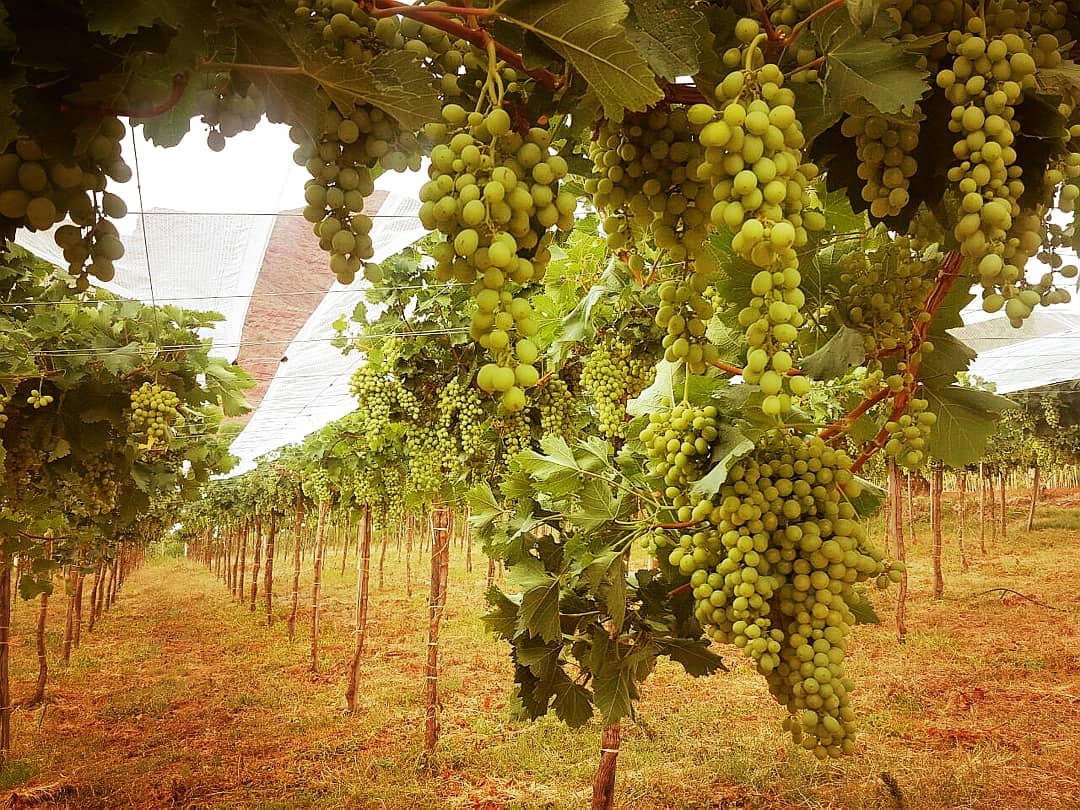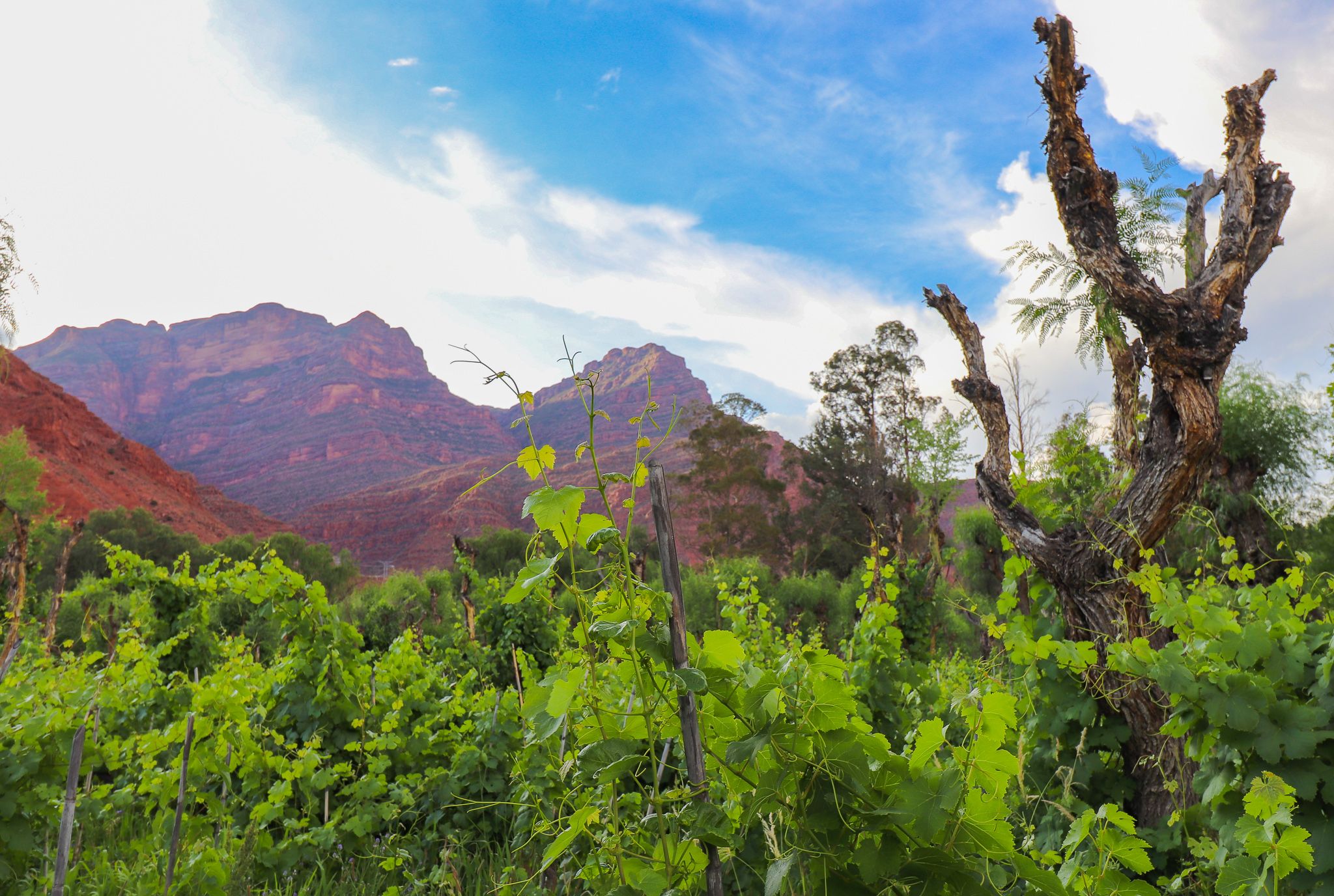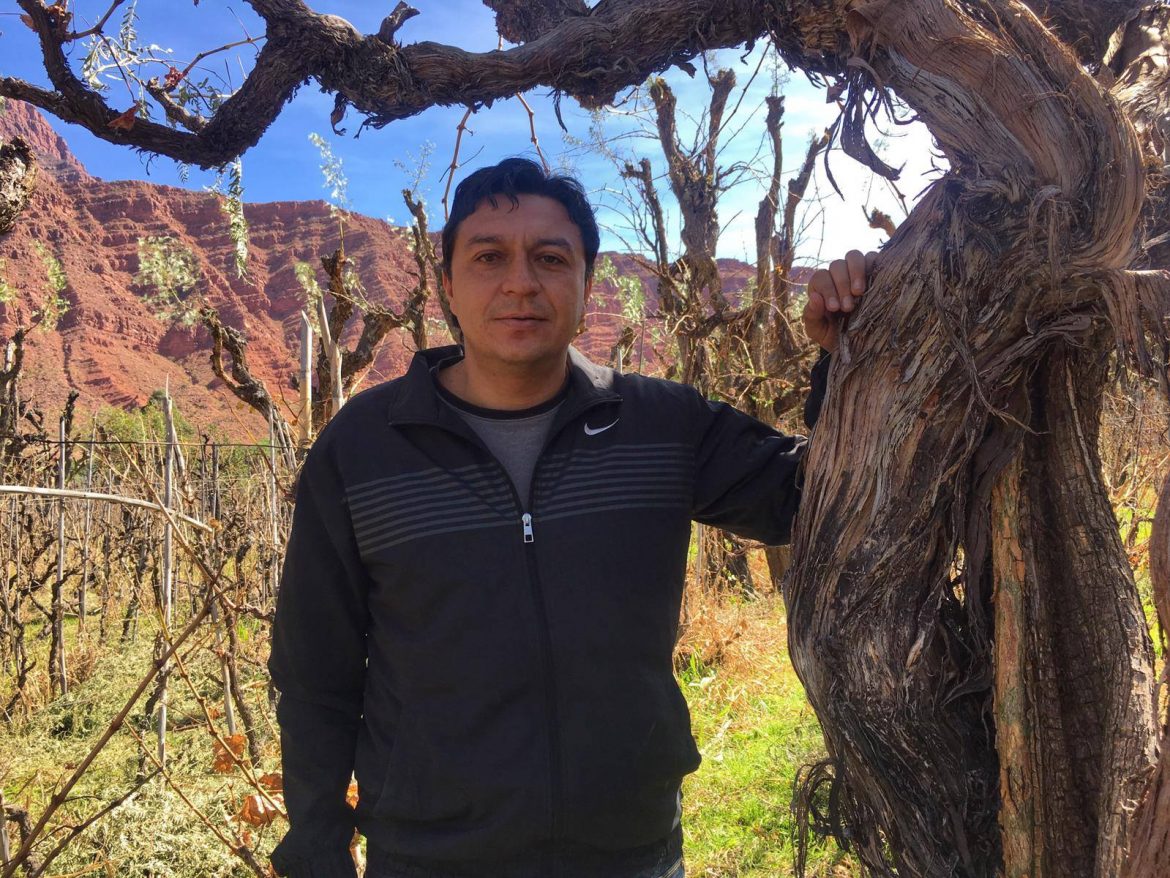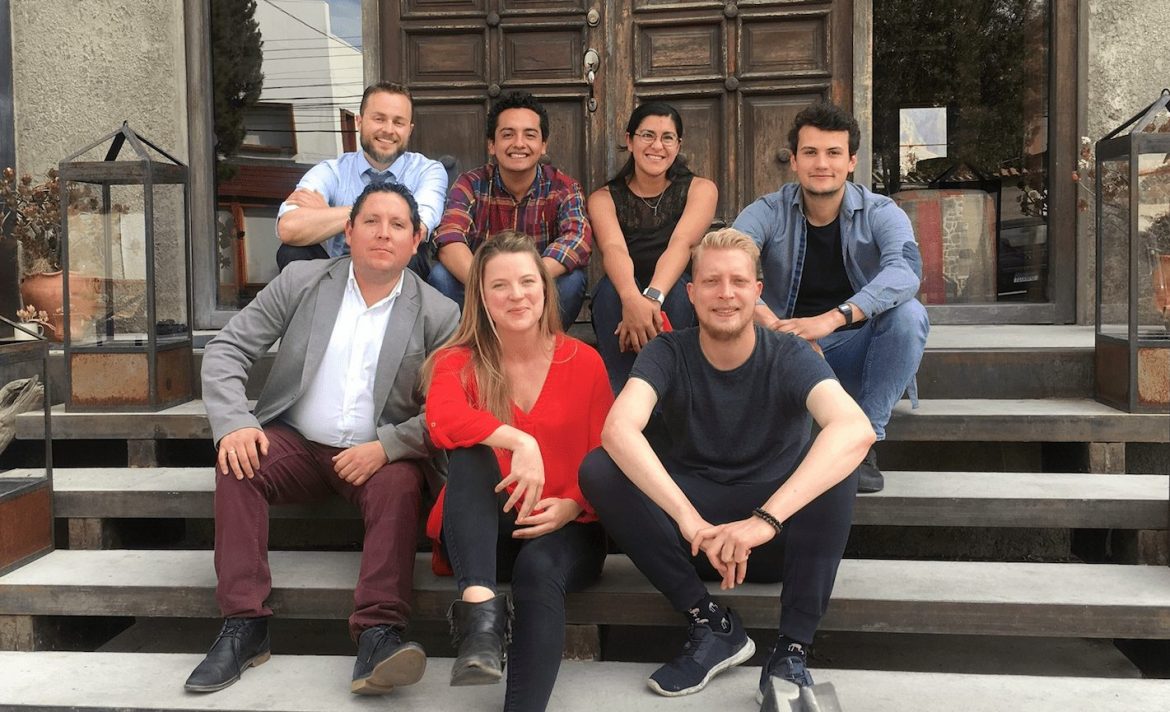Cepas de mi Abuelo is a small, family-run hotel with its own Singani distillery in the garden. The owner, Manuel, is a retired Bolivian pilot who now spends his time on their organic vineyards with his herd of 50 goats which work the land.
Cinti
Cinti Valley in Bolivia is one of the world’s most memorable wine regions: where vines grow up trees and are often well over 200 years old. It’s a stunning wine region in western Bolivia and a key part of the history of Bolivian wine as well as its future.
Overview of Cinti Valley
A Guide to Cinti Valley
Sub-Regions in Cinti Valley
Best Wines from Cinti Valley
Visiting Cinti Valley
Nowadays Cinti feels like the wild west of Bolivian wine production — isolated and untamed. But for over four centuries this historic valley was one of the heartlands of Bolivian wine and an important supplier for the thirsty miners of Potosí.
A natural oasis in the high-altitude desert plains, the Cinti Valley spans about 80 km in length by up to 5 km in width and is protected on either side by steep cliffs. The Cinti Valley is a canyon, created by an ancient fault line. To the west lie iron-rich red soils that are so colourful that this area was baptised El Cañon Colorado (“the colourful canyon”). On the eastern side, there are lighter-coloured soils with a mixture of calcareous, clay and sandy material. Two rivers run through the centre of the canyon — Río Grande and Río Chica — and vineyards are planted on the banks of both, and on both types of soils.
Although now three hours by road from both Potosí and Tarija, the Cinti Valley actually feels a whole world away from anywhere. It was only in the last decade that paved roads made their way here and so development has been blissfully subdued. From either direction, you pass through barren and wind-battered scrublands, where cacti, peppercorn trees and abandoned huts that once sheltered shepherds are the only signs of life until you reach the colourful canyon of the Cinti Valley.
It’s easy to see why this glowing ravine with its fresh mountain water became the weekend home of Potosí’s elite, a green idyll for the wealthy mine owners. Not only was the climate suitable for growing fruit and vegetables, but the clean air, moderate temperatures and lower altitude made it a wonderful respite from the harsh reality of the mining city.
In fact, the name Cinti is said to have originated from its curative properties. Many children died at birth in Potosí and so many women were sent to Cinti while they were ‘encinta’ (pregnant), so they could give birth there. Young children or anyone under the weather were also sent to the valley, where miracles were said to happen. A retreat to Cinti was often the doctor’s orders, and a glass of wine no doubt helped the medicine go down.
Jaime Rivera is a fourth-generation vigneron in Bolivia’s Cinti Valley where he tends old Criolla vines of over 200 years old which are trained around molle and chañar trees. In this interview, Amanda Barnes asks Jaime Rivera about some of the secrets of the Cinti Valley including how the native grape variety of Vischoqueña arrived. They discuss traditional viticulture in the Cinti Valleys, and how he has learnt traditions passed on from his ancestors which he continues today with Bodegas Cepa de Oro.
So Jaime, how old is this vineyard that we are stood in?
This vineyard has plants that are over 100, in fact over 200 years old. Where we are there are the varieties of Negra Criolla, Vischoqueña and Moscatel.
Excellent, and these are the most authentic and oldest varieties, and original here in the region. Because some were born here in the region. Please tell us about the story of the Vischoqueña grape.
These regions are the most typical of the Cinti Valley wine region. The Vischoquenña, Moscatel and Negra Criolla, and the first to arrive were Moscatel and Negra Criolla. Which were brought here in the colonial era by the Spanish. The story of Vischoqueña says that in the region of Vischoca, here by the Rio Grande, they were bringing some vines (we don’t know what vines exactly) and the cart overturned with all the vines and the spilled all done the river. And on the river banks, these grapes started to grow, and because it was in the Vischoca region the grapes were named Vischoqueña, and it was a very productive grape, a delicious grape. And so here in the region of the Cinti Valleys we all started planting this grape too, especially near the Rio Grande (a river which runs down south here).
How interesting! And the other thing that is really interesting here is the way in which the vines grow – because here we have a vine and a tree. So the ‘tutor’ is the tree, and the grapes grow around it. Can you tell me a bit about the benefits of growing grapes in this way, why is it good for the vine to have this protection from the tree?
The old way of planting, the way my grandparents did for example, they say has the benefit of protecting the vineyard from hail, and frosts. By being in the tree, the grapes which are growing up here on the pergola (these trees are chañar and molle) are protected by both the hail and the frost. Because before we didn’t have hail nets, and it’s impossible to use hail nets with a formation like this. So our ancestors planted the vineyards like this for protection. The vines are also more productive when they are grown like this. This is a parral (pergola).
And how much can a plant growing on a tree like this produce?
Well it depends, on whether it is a molle or chañar tree. But it is around 10 kg per plant.
Great, and is it easy to harvest?
It’s very difficult! You have to go up with ladders to reach the grapes, and also to prune. You have to do everything by hand too.
Interesting. And here behind us we can see that Cinti is really in a valley between mountains…
Yes, exactly. And that’s what’s great about this valley. We call it the Coloured Canyon of Cinti Valley. It has a very unique climate, and thank God it is very suitable for grape growing because of these tall mountains. We have very hot days and very cool nights, which means the grapes arrive to an excellent maturity. We easily reach a minimum of 13% abv, and can reach 14 or 15% too. This is a great advantage we have here in the region, the grapes get to their full maturity.
And the wines are delicious!
Yes, I think so no? They have their characteristic of the region.
Read more on Bolivian wine:
What are the best Bolivian wines to taste in order to understand this unique wine country? That was the question on the minds of the team at South America Wine Guide last week as we traversed the wine regions of Bolivia and sat down to an extensive panel tasting on Friday.
As part of our upcoming Latin American wine guide exploring the regions and producers, we’re going to be tasting extensively to bring you some of the top pours that can help guide your taste exploration of this exciting wine continent. First up was Bolivia, with our panel tasting last week to help us find the award-winning wines for our upcoming book: South America Wine Guide 2020.
The Tasting
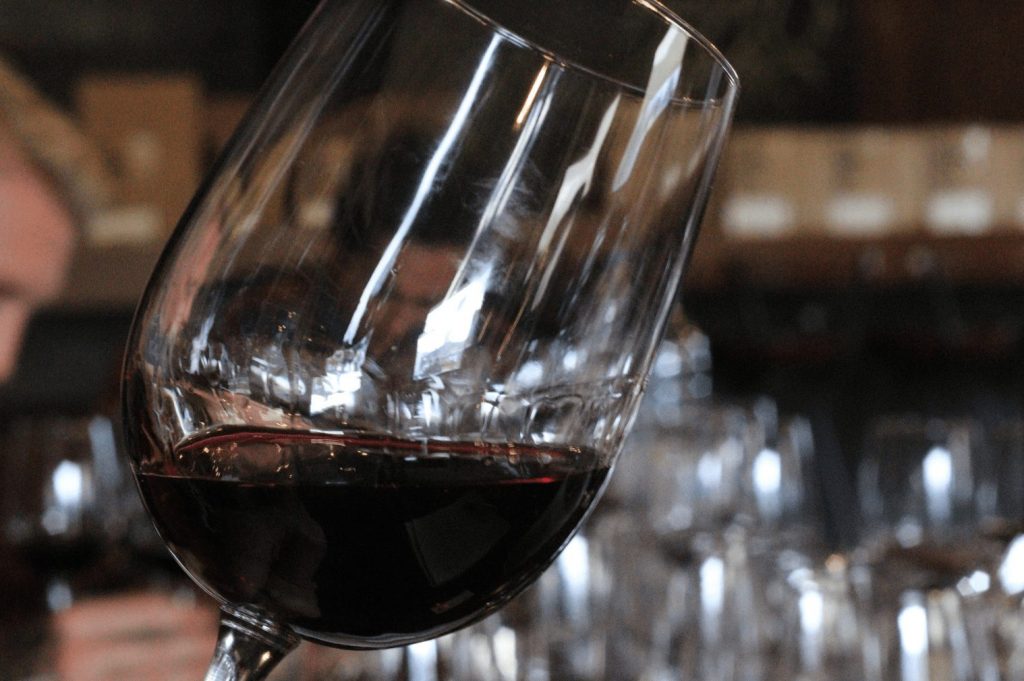
Bertil is also one of our Curators for Bolivia, along with fellow sommelier and wine importer Darren Armstrong, who for several years has been living between Bolivia and the US and working with Bolivian wines. Together they drew up a shortlist of Bolivian wines that not only reflect the high altitude of this landlocked country but also the powerful attitude of Bolivian producers today — from those who are safeguarding historic wine traditions in the oldest wine valleys to those who are innovating with new varieties and new regions.
This shortlist of wines was put to our panel in a blind tasting to discover which wines and varieties really stood out. The tasting included close to 60 samples of wines from a range of valleys in Bolivia, including Tarija, Cinti, Samaipata and Cochabamba. Varieties ranged from the most traditional of Criolla varieties (such as Vischoqueña and Negra Criolla) through to new varieties for Bolivia, including Marselan and more established international varieties such as Tannat and Cabernet Sauvignon.
We were thrilled to count on the participation of many of Bolivia’s top wineries (each of which you can read about in our winery guide) including:
- Aranjuez
- Campos de Solana
- Cepa de Oro
- Cepas de Fuego
- Cruce del Zorro
- Kohlberg
- Kuhlmann
- Marquez de la Viña
- Bodega Magnus
- San Francisco de la Horca (Marcelo Vacaflores)
- Tierra Roja
- Uvairenda
who all kindly sent in their samples ready for the tasting.
The results & some conclusions on Bolivian wine
The results are filed away and being kept in a guarded vault until the book is released later this year… but there are a few conclusions from the panel and some of my own conclusions which I’m happy to share at this stage. It’s a rare opportunity to taste so many Bolivian wines in one big tasting, and one that was both eye-opening and quite inspiring. Here are some thoughts following the tasting:
Moscatel is the queen of Bolivia
One of the most exciting flights was of dry wines made from Moscatel de Alejandria (Muscat of Alexandria). This really is Bolivia’s variety of excellence. Each wine carried such a strong identity, expressing not only the variety, but the vineyard and the vigneron. Each was unique but equally as exciting and enjoyable to drink. I am going to put my neck out there and say Bolivia has the best Moscatel in the world.
Bolivia’s best steal is simple, refreshing white wines
In terms of value, it was hard to beat some of the refreshing white wine blends and single varieties coming from all over Bolivia’s wine regions. The abundant sunshine and high altitude mean that these white wines deliver on exuberant aromatics while keeping a refreshing and balanced acidity – some of which you can find on the local market for under $10 USD!
Tarija’s red wines can be as big and bold as those from the rest of the New World, but acidity marks the difference
Tarija is the heart of Bolivian wine production and it’s here where you’ll find some of Bolivia’s most expensive wines that are designed to compete with some of the other big ‘iconic’ wines from the New World. The high altitude and luminosity of Tarija mean that these wines always deliver on concentration and high sugar/alcohol potential but the spine of refreshing acidity is what differentiates them from those of other New World wine regions and keeps them in balance. Whether we are looking at Tannat, Cabernet Sauvignon, Petit Verdot or Malbec, each had a lifting acidity which really contributed to their character.
Celebrate Criolla and Cinti
Some of the wines with the most unique expressions were the Criolla varieties (Missionera and Vischoqueña, for example), which often came from the Cinti Valley. These unique grape varieties should be celebrated and the old vines treasured as they undoubtedly offer some of the most authentic and distinctive expressions of Bolivian wine.
The Panel
 Bertil Tøttenborg: Bolivia Curator
Bertil Tøttenborg: Bolivia Curator
Bertil Levin Tøttenborg has been sourcing and selecting wines from around Bolivia’s wine regions for the impressive wine cellar at Gustu restaurant since 2015. As Head Sommelier at Gustu he is in charge of one of the most extensive lists of Bolivian wine in the world.
Born and raised in Denmark, where he trained as a sommelier, Bertil brings both an international and a local perspective to the tasting panel.
 Darren Armstrong: Bolivia Curator
Darren Armstrong: Bolivia Curator
Trained in the US, Darren Armstrong is an experienced sommelier who has worked in several different areas in the United States, including restaurants, wine imports, distribution and education.
Since 2014, he has specialised in Bolivian wine and he spent time living in La Paz before moving back to the US to help found Chufly – a specialist wine importer focused on bringing Bolivian wine and Singani to the US market. He also works as a consultant and runs education workshops on Bolivian wine in the US, and tasting classes and international wine education in Bolivia.
 Amanda Barnes: Editor & Bolivia Panelist
Amanda Barnes: Editor & Bolivia Panelist
Founder and Editor of the South America Wine Guide, Amanda Barnes has been based in South America since 2009, where she specialises in writing about Latin American wine regions for several international wine magazines and books.
She is an experienced wine taster and panelist for several international wine competitions, including the Decanter World Wine Awards. She has visited Bolivia’s wine regions in 2016 and 2019 to meet producers and learn about the wines on the ground.
 Luis Guzman: Bolivia Panelist
Luis Guzman: Bolivia Panelist
Luis, or Lucho, Guzman is a specialist in sustainable viticulture and is instrumental in helping to develop Bolivia’s Sustainability Code for wine producers. He founded and organises one of Bolivia’s top wine tasting events, Bolivia Wine Fest, held each August in La Paz.
He is an experienced taster of Bolivian wine and frequently travels to other wine regions in Latin America and Europe to taste wines.
 Laura Decurnex: Bolivia Panelist
Laura Decurnex: Bolivia Panelist
Laura is an Argentine-born sommelier who moved to Bolivia in 2007 and has been writing about the wines and producers of Bolivia in her blog, Lau Malbec, for over a decade.
As well as communication and writing, Laura frequently gives masterclasses and wine tastings in Bolivia to educate local consumers about wine from Bolivia and beyond. She is experienced in tasting Bolivian wine and wines from around Latin America and elsewhere.
 Pablo Antelo: Bolivia Panelist
Pablo Antelo: Bolivia Panelist
Pablo Antelo is a young Bolivian wine professional who made his name working as Assistant Manager in Gustu and spent time training in Europe, as well as La Paz.
He is now restaurant manager at Ali Pacha restaurant in La Paz, which offers plant-based Bolivian haute cuisine focused on highlighting Bolivian ingredients and wines.
–
 Mauricio López: Bolivia Panelist
Mauricio López: Bolivia Panelist
Mauricio López is a young chef in La Paz and one of the rising stars of Bolivian cuisine. He has been cooking for over a decade. He trained in Copenhagen’s Noma before working in the kitchen at Gustu for several years. He recently founded Ancestral restaurant in La Paz.
Mauricio is an experienced local wine taster and brings his experience of pairing Bolivian wine and cuisine to the panel.
Read more about Bolivian wine:
A special thank you to Darren Armstrong for sharing his photography from the tasting.
